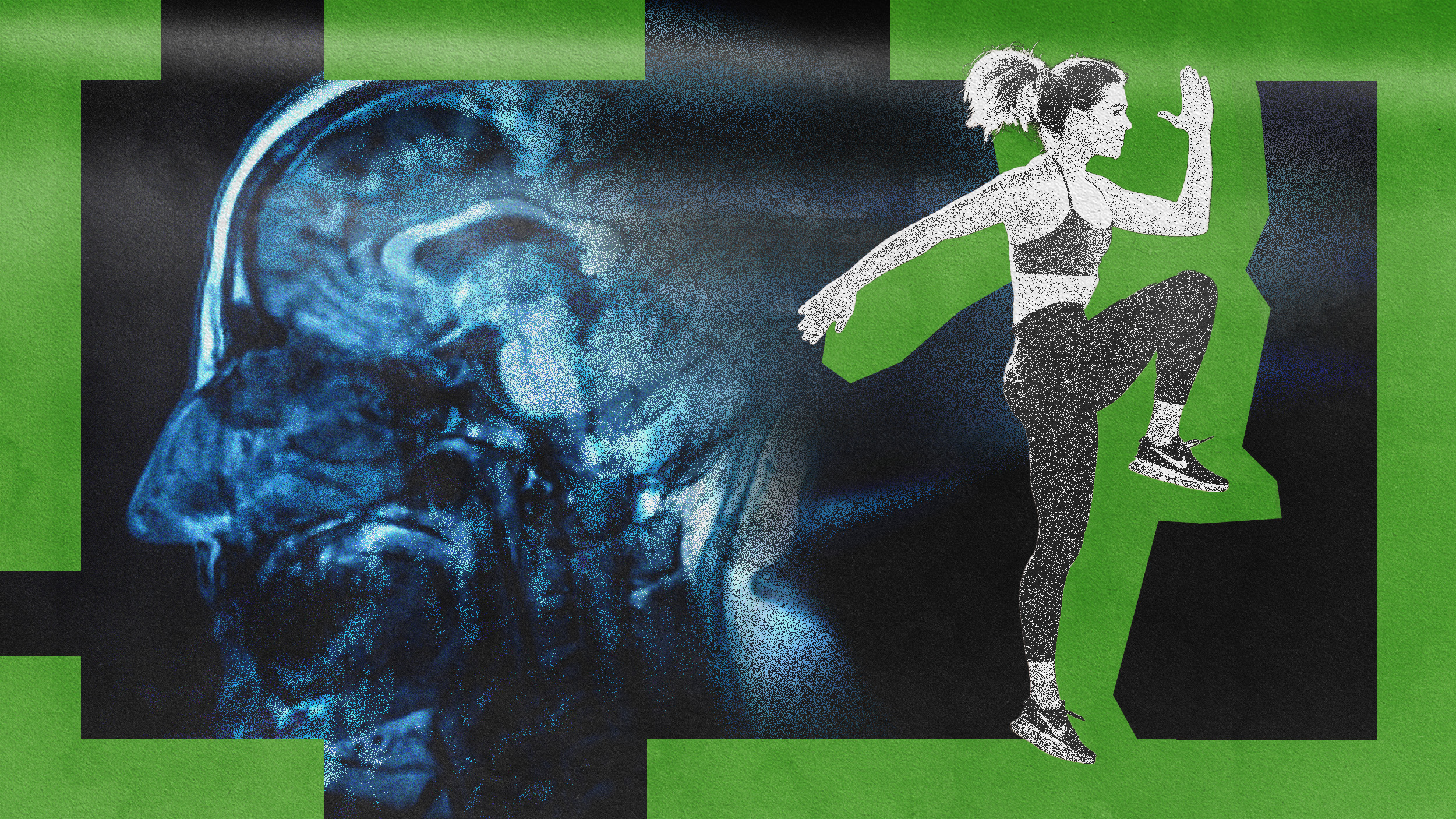The exciting research that may cure Parkinson’s

- The prevalence of Parkinson’s disease has doubled since 2000, yet the introduction of new treatments lags behind other diseases.
- GeneCode is developing a drug that mimics neurotrophic factors to protect and regenerate neurons, potentially offering an earlier and more effective treatment.
- There’s much to do before the drug can enter clinical trials, but the preliminary data is promising, and international collaboration ensures the lessons and knowledge will be shared.
Parkinson’s disease is on the rise. According to the World Health Organization (WHO), the prevalence of the neurodegenerative disease has doubled worldwide since the turn of the century. This has been linked to a constellation of factors, though the most prominent risks are age and genetics. As the world population grows older, we’re likely to see Parkinson’s cases, and deaths, grow in tandem.
Parkinson’s disease caused 329,000 deaths in 2019, according to the WHO, a 100% increase since 2000. Each data point represents the heartbreaking struggles of people and families living with the diseases. And those realities can be devastating.
Mart Saarma, a neurobiologist and professor at the University of Helsinki, has witnessed it firsthand. His uncle was stricken with the disease, and Saarma watched as it slowly degraded his uncle’s quality of life and transformed his personality. Once, Saarma went to help his uncle, and his uncle called the police. Unable to recognize his nephew, he feared a stranger had come to rob him.
“People have understood how important it is to fight cancer, and thanks to that, we have started to get the first efficient cancer drugs. Unfortunately, this has not been the case with neurodegenerative diseases,” Saarma says. “The field still suffers from [a lack of] funding, and this is becoming a significant problem in Western societies. We now have about 10-12 million Parkinson’s patients, which will double in 20 years. We need to take this very seriously.”
The message is starting to get out. Last year, GeneCode, a pharmaceutical company where Saarma serves as the chief science officer, won a record-breaking €16 million funding option from the European Innovation Council Accelerator. The reward was to support the development of a novel drug designed to combat neurodegeneration in Parkinson’s patients.
Freethink recently spoke with Saarma to discuss how their treatment promises to help Parkinson’s patients. According to him, preliminary evidence suggests the drug may not only alleviate symptoms, it may also protect the neurons from further damage and help to restore them for a healthier, longer life.
On the path to neuron death
Another reason that treatments for Parkinson’s and other neurodegenerative diseases are lagging behind those for other ailments is that the brain is a fiendishly complex organ. The human brain houses 100 billion neurons. That’s roughly the same number of stars in our Milky Way galaxy. But as Saarma points out, it’s hardly a perfect comparison because neurons don’t exist in interstellar isolation. Instead, they form thousands of intimate, unique connections with other neurons — connections that are vital to their health and function.
“So, the Milky Way galaxy is a piece of cake compared to our brain,” he jokes.
The brain is exceptional in another way, too. Unlike skin cells, the vast majority of neurons don’t go forth and multiply — or, in this case, divide. They are among the few cell types in your body that don’t regenerate through mitosis, leaving the brain with limited opportunities to self-repair. Once a neuron matures, it either lives or dies; if it dies, that’s that. To stay alive, neurons need energy and protection. Without them, neurodegenerative diseases begin.
We now have about 10-12 million Parkinson’s patients, which will double in 20 years. We need to take this very seriously.
Mart Saarma
In the case of Parkinson’s disease, the epicenter of this die-off is the substantia nigra, a structure located in the midbrain. It houses clusters of dopamine-producing neurons that are necessary for proper brain and, by extension, bodily function.
Although dopamine is famous for being one of the “happy hormones,” its role in the body and brain is manifold. In our brains, it serves as a neurotransmitter that neurons use for communication and coordination. It signals rewarding feelings for experiences we find pleasurable. It helps regulate sleep, mood, motivation, and blood flow. In the substantia nigra, it is especially important for aligning movement.
Because of this diversity, Saarma likens dopamine to a symphony conductor. When dopamine production is normal, these bodily activities act in harmonious rhythm. But when production is disrupted, these same activities grow discordant. And Parkinson’s robs the brain of its conductor.
As disease sets in, these midbrain neurons become impaired and lose the ability to produce dopamine. Their synaptic connections break down, and unable to coordinate with the millions of other neurons they rely on, they begin to die. This creates a cascading effect — as the neurons die, the disease progresses, leading to more neural death and further progression.
Their loss is experienced as inhibited movement. Parkinson’s patients endure tremors, spasms, and muscle stiffness. These alienate them from their bodies in ways that make even prosaic activities like getting out of bed a painful endeavor.
But as dopamine’s conductor role suggests, patients may also experience a gamut of other debilitating symptoms. These include insomnia, constipation, vertigo, tooth decay, and a variety of aches and pains. There’s also the possibility of dementia. Some, though not all, patients develop apathy, impulse-control problems, or wild mood swings. They can lose their attention, motivation, and even memories.
Whatever set of symptoms ultimately develop, they all harm a patient’s quality of life, and the mere presence of this symptomatic lottery weighs heavily on them and their loved ones from the first diagnosis.
The challenge of curing Parkinson’s
To prevent this die-off, researchers like Saarma have been looking for a way to reinvigorate neurons. While that’s proven challenging, there have been some successes in managing the symptoms of the disease — though the ultimate goal of treating it remains out of reach.
Today, a standard treatment for Parkinson’s patients is levodopa. It’s a dopamine-replacement agent often taken as a pill. Once absorbed into the blood through the gut, the drug enters the brain where it converts into dopamine that neurons can use. Unfortunately, levodopa only helps manage symptoms. It also has some downsides, such as inducing nausea.
It’s nonetheless essential for Parkinson’s patients because this drug, unlike most, can pass through the blood-brain barrier. Think of the barrier like a biochemical wall that keeps foreign pathogens from entering the brain. It’s a necessary defense for our health; however, that very protection also makes it difficult for life-saving drugs to reach their neural destination.
“None of the available drugs can slow down or stop the degeneration and death of these neurons,” Saarma says. “So, the major goal of companies is to develop drugs that would slow down or even stop disease progression. If that were to be successful, it would be a fundamental change in the treatment of neurodegenerative diseases.”
Other treatments have focused on neurotrophic factors — proteins that support the maintenance of neurons by activating “neuroprotective mechanisms.” In our interview, Saarma cited animal research showing that a specific protein — called a GDNF — actually cured the disease in mice and non-human primates.
Human clinical trials, he notes, have also shown positive results in rescuing and regenerating neurons.
But there’s a catch: These proteins are hefty in molecular terms. They weigh roughly 32,000 daltons, a unit of mass used by chemists and physicists. That’s far too large to pass the blood-brain barrier — which imposes a limit of around just 400-600 daltons — meaning GDNF can’t be taken as a pill or through an injection. To get these proteins to the degenerating neurons, the researchers in these trials needed to put them there directly through brain surgery.
Such a surgery is obviously invasive and risky. Because of this, Saarma explains, ethics committees won’t approve it for early-stage patients — even though the sooner one starts treatment after a diagnosis, the better the outcome will likely be.
“In these clinical trials, GDNF has been given to patients 10 years after their diagnosis,” Saarma says. “[By then], only 20–25% of dopamine neurons are still alive.”
Harmonizing the mind-body connection
GeneCode’s own novel drugs exist in the middle ground. They developed what is commonly known as a “GDNF mimetic,” composed of molecules that imitate how neurotrophic factors act in the brain. Like the large proteins, they bind to the GDNF receptors on the neuron’s axons and send chemical signals that stimulate dopamine production. This helps the neurons with axons stay active and maintain synaptic connections with other neurons.
The field is endless, but my life is limited, as are all of ours. But you do what you can with your time.
Mart Saarma
Unlike the proteins, these molecules are small, weighing roughly 500 daltons. This means GeneCode’s drug can pass the blood-brain barrier as a potential pill or injection. This would allow treatment during earlier stages, when more neurons are still alive and higher quality of life can be potentially maintained much longer.
“The production, the transportation, the storage of small molecules is much, much, much cheaper,” Saarma says. “This means that the whole treatment will potentially be available for people all over the world, which I think is quite important.”
The preliminary results have been promising. Saarma and his team in Helsinki tested both GDNF proteins and their mimetic compound on model Parkinson’s dopamine neurons in the lab. They found that both not only protected these neurons from further degeneration, they also stimulated the growth of axons and neural regeneration.
“If we are lucky, we will have a wonderful drug that slows down or stops neurodegeneration in the brain and also stops it in the periphery to alleviate non-motor symptoms like constipation, pain, sleep disorders, and depression, which significantly reduce the quality of life of Parkinson’s patients,” Saarma says.
The path ahead
Drug development is a long and arduous process, and GeneCode still has much to do. The company is about to finish animal experiments. After that, they must certify that the drug can be consistently and safely produced to ensure future quality assurance. They then have to perform toxicology studies — all before the drug can begin clinical trials in humans.
“Although I think we have a very good drug candidate, there is, of course, always room for improvement,” Saarma says. “We have great preliminary data and a model of Parkinson’s disease, [but] the situation is different when you get into humans. A reminder: The rat brain is three grams. Our brain is one-and-a-half kilos. That’s a 500 times difference.”
The rat brain is three grams. Our brain is one-and-a-half kilos. That’s a 500 times difference.
Mart Saarma
But while Saarma is pragmatic, he’s also optimistic. During our conversation, he mentioned how GeneCode’s efforts have been supported by an international community of researchers and medical professionals. Among them are the French start-up ArgoBio, which GeneCode partnered with to develop their drug, and a collection of labs across Europe and the United States, including the Neil McDonald Lab at the Francis Crick Institute in London.
Even if GeneCode’s drug doesn’t work out, it’s that kind of collaboration and knowledge sharing that ultimately leads to the progress necessary to give Parkinson’s patients and their loved ones more hope than they had yesterday.
As Saarma notes, “The field is endless, but my life is limited, as are all of ours. But you do what you can with your time.”
This article was originally published by our sister site, Freethink.





